Art Collectors
What I Buy and Why: Borlem Prize Founder Roberto Toscano Shares Rita Ackermann’s Moving Tribute to His Late Wife
We caught up with the music composer and researcher to chat about a few highlights from his art collection.
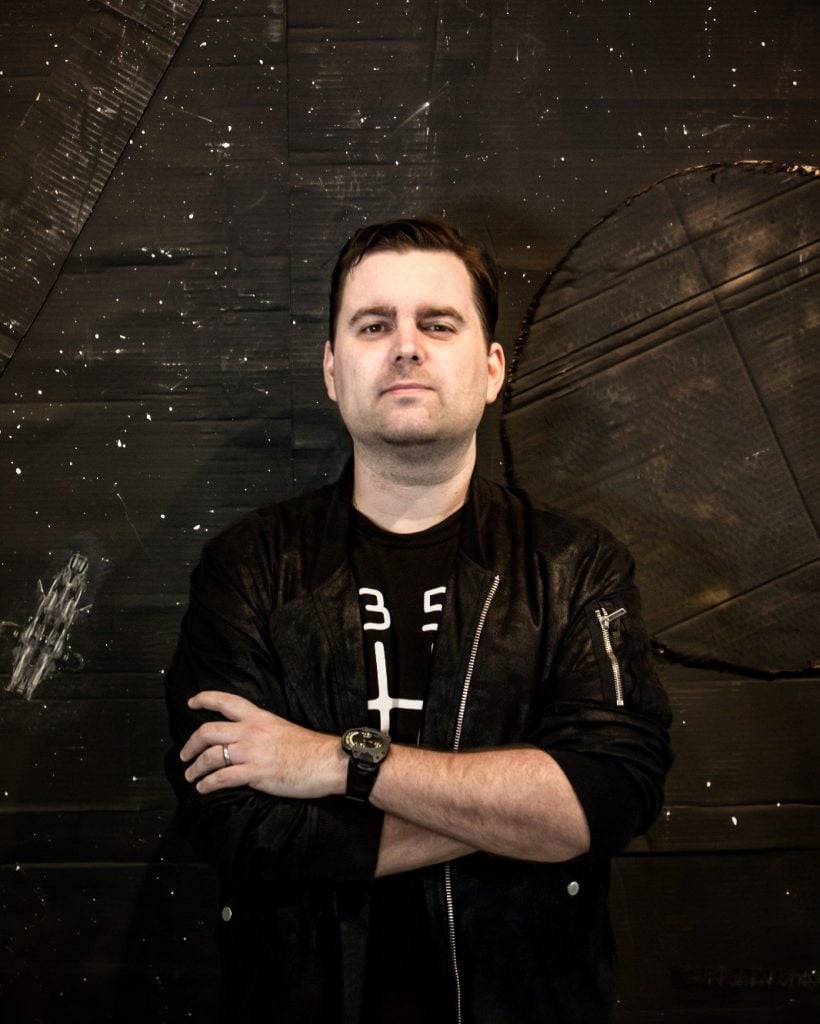
We caught up with the music composer and researcher to chat about a few highlights from his art collection.

Naomi Rea

Art has been a salve for Roberto Toscano. The collector, music composer, and researcher has suffered some hard knocks in the past few years, including losing two close family members.
In recognition of the power of art to help those struggling and inspire productive conversations about mental health, he recently founded a new $40,000 art award, the Borlem Prize, which each year recognizes one artist whose work brings awareness to mental health issues and struggles. He created the prize in the memory of his brother, Fernando Toscano, who died in 2018.
Over the past decade, Toscano, who splits his time between Miami and Brazil, has amassed an enviable collection of contemporary art. He is the lucky custodian of works by artists including Donald Judd, Paul McCarthy, Hiroshi Sugimoto, and James Turrell, among others.
We caught up with Toscano about the unpleasant necessity of putting artwork in storage, the artist Rita Ackermann’s moving tribute to his late wife, and the Miami apartment that has become an homage to her memory.
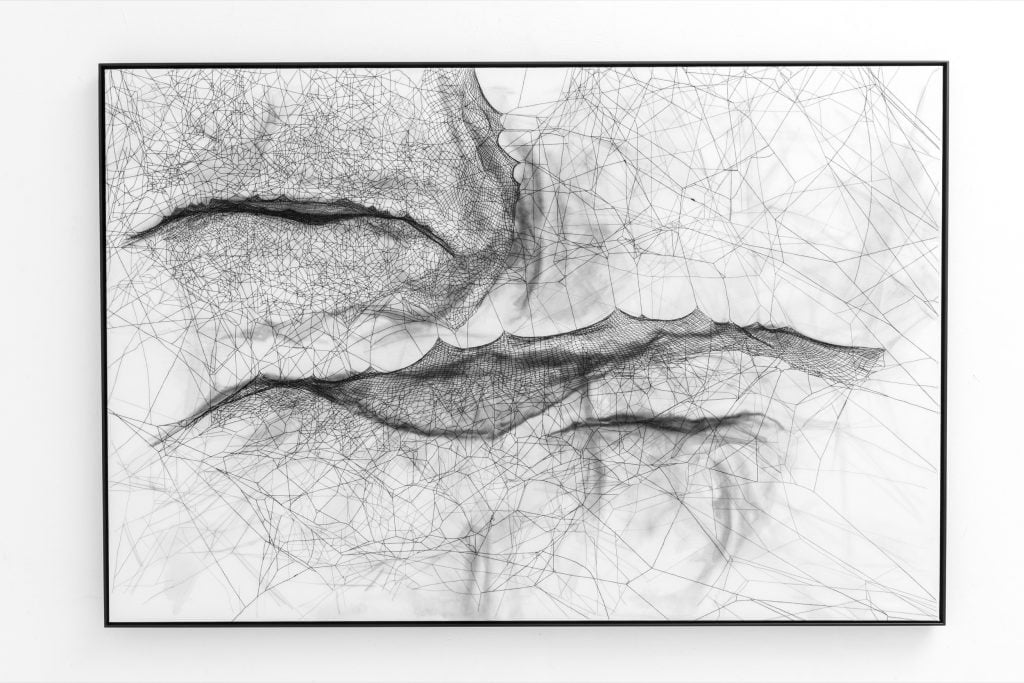
Tomás Saraceno, Arachne’s handwoven Spider/Web Map of Perseus A, with a duet of Argiope anasuja – two weeks, Three Cyrtophora citricola – three weeks, One Cyrtophora moluccensis – two weeks, and One Tegenaria domestica – ten weeks (2021).Courtesy of the artist and Tanya Bonakdar Gallery, New York and Los Angeles. © Photo: Studio Tomás Saraceno, 2021.
What was your first purchase (and how much did you pay for it)?
My first purchase was from Gemini G.E.L.—it was a Richard Serra one-color etching. I just looked up the date in my email to see exactly when it was: February 8, 2012.
What was your most recent purchase?
I’ve just acquired two large pieces by Tomás Saraceno from his current show at Tanya Bonakdar Gallery, which is is running concurrently with his survey at The Shed. These are large-scale, hand-woven tapestries that continue his exploration of spiderwebs and architectonic structures that come out of nature and physics.
I have an immense interest in contemporary architecture. I follow the field closely and was looking for two large works to go in the living room of my São Paulo apartment—a building designed by Jean Nouvel. Tomás’s work connects well with the themes I’m trying to highlight in that apartment’s collection, which is mainly focused on nature, especially the environmental sculptures and wall reliefs of Frans Krajcberg.
Which works or artists are you hoping to add to your collection this year?
I add as much work as I can to my collection every year. Since my move to Brazil, I’ve focused mainly on the seascapes of Hiroshi Sugimoto and Krajcberg, as I previously mentioned. I’m really hoping to add something by John McCracken.
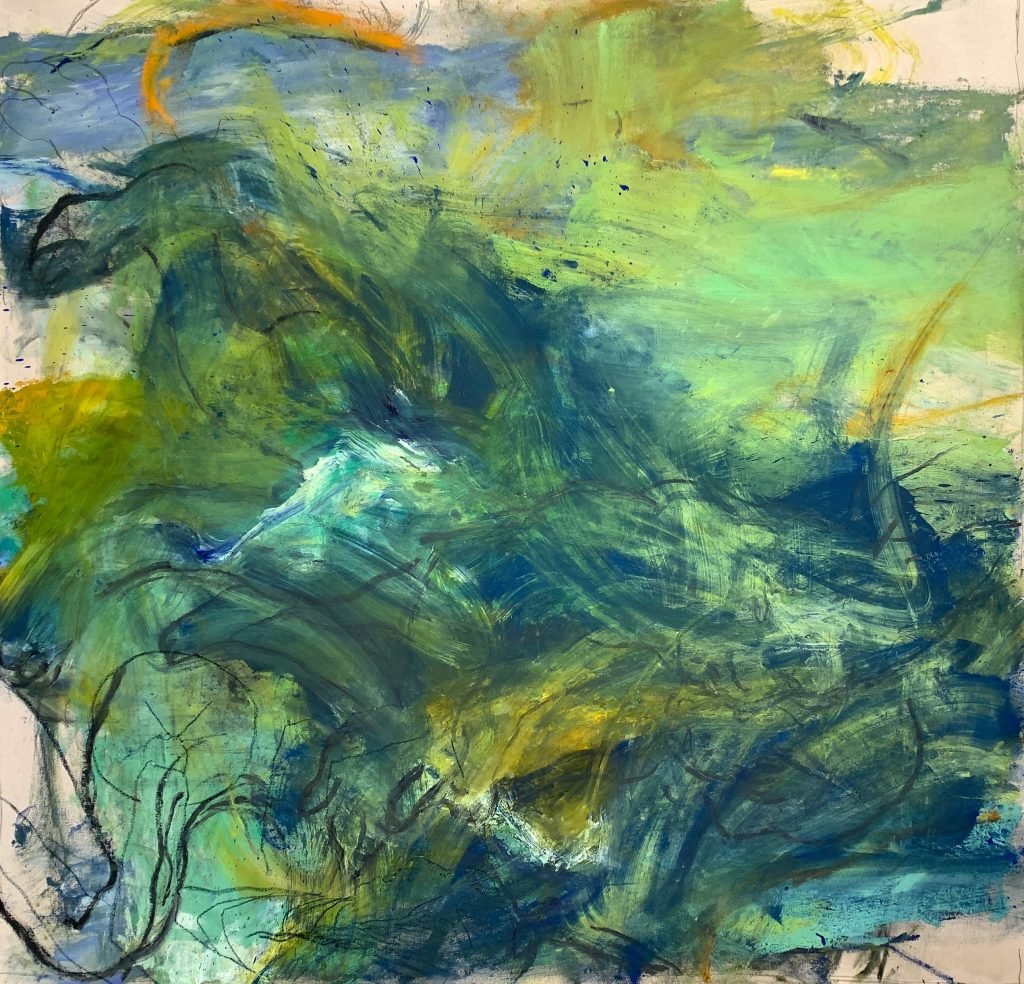
Rita Ackermann, Mama for Nadia, 2021. Photo: Monica McGivern.
What is the most expensive work of art that you own?
The most priceless work of art in my collection, and it’s not even close, is a painting that Rita Ackermann gave to me after my wife passed away in 2021. The painting carries my wife’s name: Nadia. It was painted by Rita after she heard of my wife’s passing and is a tribute to her life and energy. No work of art can ever surpass that, as far as I’m concerned.
I’ve lost two of the most important people in my life to suicide, my little brother in 2018 and my wife in 2021. These events have made me focus on bringing awareness toward suicide prevention and mental illness; for those reasons, I’ve put much of my time and energy into creating and running the Borlem Prize, an international prize that will be awarded each year to a single artist whose work brings awareness to mental health issues and struggles. The first one, announced in February, went to Daniel Turner.
The prize totals $40,000, allocated as an unconditional grant of $20,000 paid directly to the winning artist, as well as a donation of $20,000 made in the winning artist’s name to an internationally recognized charity whose goals revolve around suicide prevention and mental health advocacy.
Where do you buy art most frequently?
It’s a pretty even mix of auctions and buying from galleries. Some work might come directly from artists and a few pieces are from art fairs, but Covid-19 made that more complicated, as I traveled much less.
Is there a work you regret purchasing?
No, I regret not having space for all the large-scale sculpture I collect—having to put work into storage is painful and goes against what I believe in. My goal is to acquire more and more space to show art over the next few years. I currently have a place in Lisbon, which I’m setting up; the Nouvel apartment in Brazil, which is under construction; and my Miami apartment, which houses my Miami collection in the memory of Nadia.
There are over 100 works in that apartment. After Nadia’s passing, I couldn’t bring myself to move anything… Everything is more or less as she left it. I’d like to keep it that way in perpetuity.
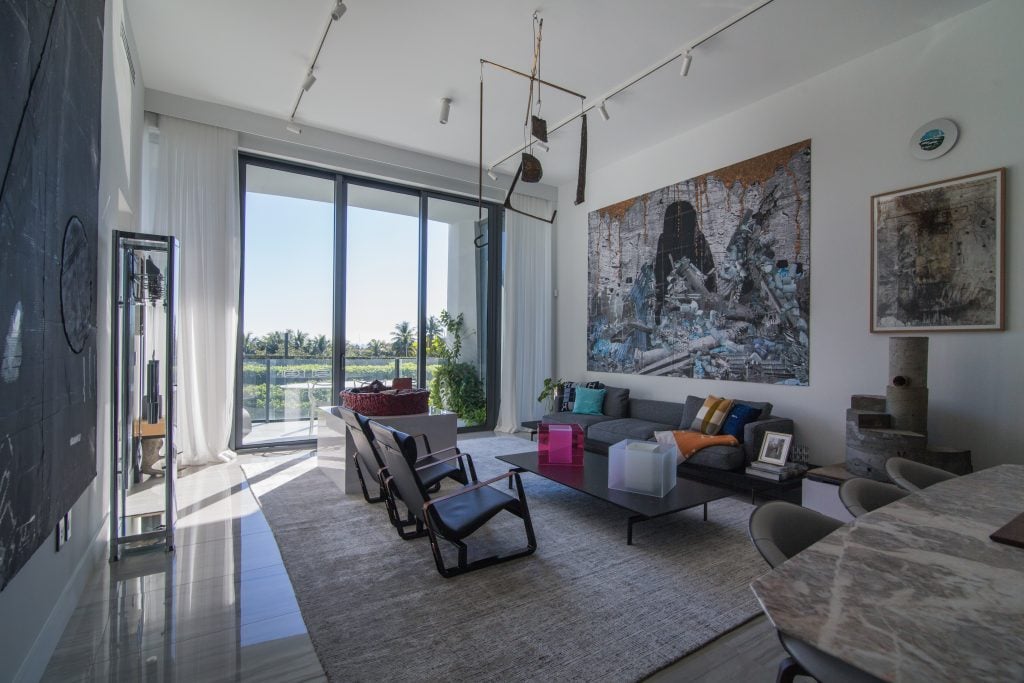
Roberto Toscano’s Miami living room, featuring works by Sterling Ruby, Larry Bell, Thomas Hirschhorn, and Oscar Tuazon. Photo: Monica McGivern.
What work do you have hanging above your sofa? What about in your bathroom?
In Miami, Thomas Hirschhorn’s collage It is now in Ruins (2017) sits over the living-room sofa. In Nadia’s office, Rita’s painting made in her memory hangs over Donald Judd’s daybed, which is sofa-like. In my office, over a sofa by Daniel Libeskind, there are two empty frames which normally house a pair of Pixel-Collages, also by Thomas Hirschhorn, that are currently in Rome taking part in MAXXI’s “The Purple Line.” Finally, the guest bathroom has a drawing by Paul McCarthy.
What is the most impractical work of art you own?
I’m forced to store some very large-scale sculpture—I have extremely big works by two of my favorite artists, Daniel Turner and Oscar Tuazon. I’d love to bring those pieces out, but I just don’t have the right place for them right now. The largest of Daniel’s pieces are more than 12 feet by 8 feet (two sets of Formica-and-steel sinks), and Oscar’s largest piece weighs over one ton.
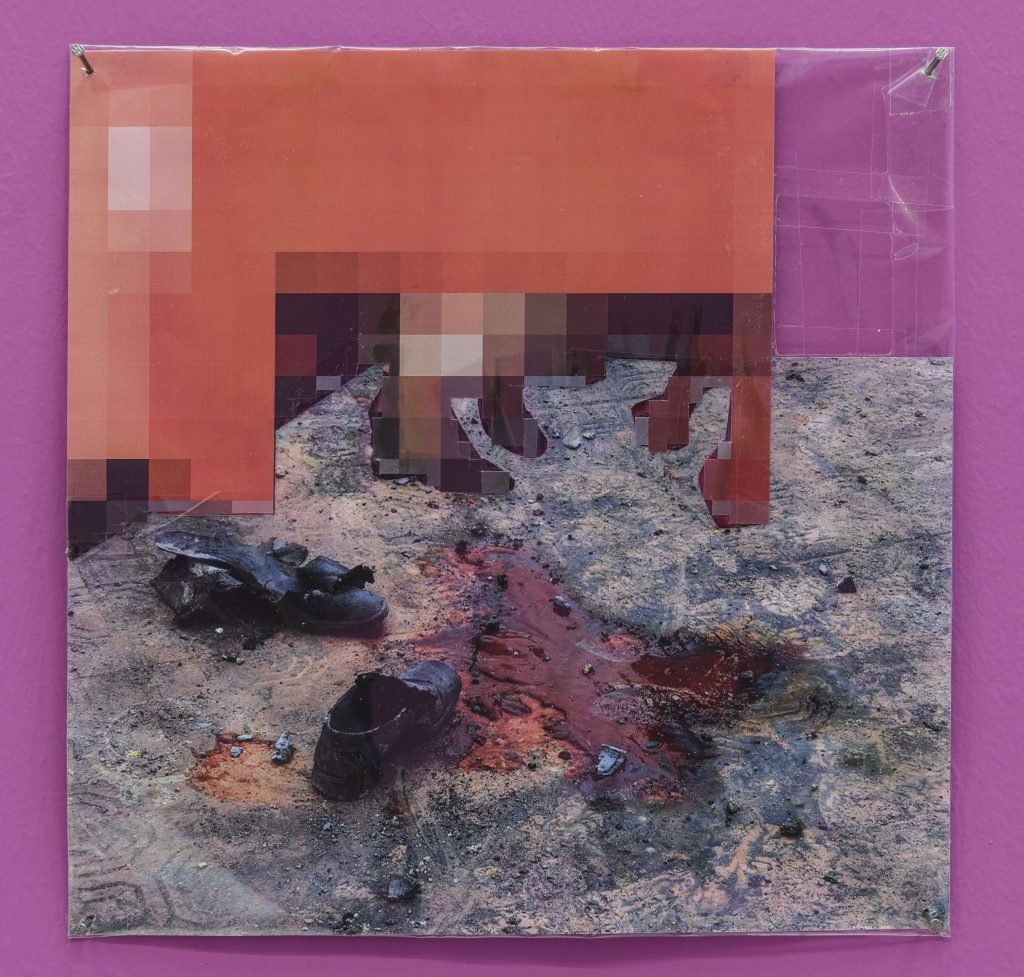
Thomas Hirschhorn, Pixel-Collage N.117 (2017), as currently Installed at MAXXI in Rome. Photo by Giorgio Benni.
What work do you wish you had bought when you had the chance?
The manuscript to György Ligeti’s 1961 orchestral masterpiece Atmosphères.
If you could steal one work of art without getting caught, what would it be?
Let’s make it a real impractical answer: Burri’s Cretto di Burri.